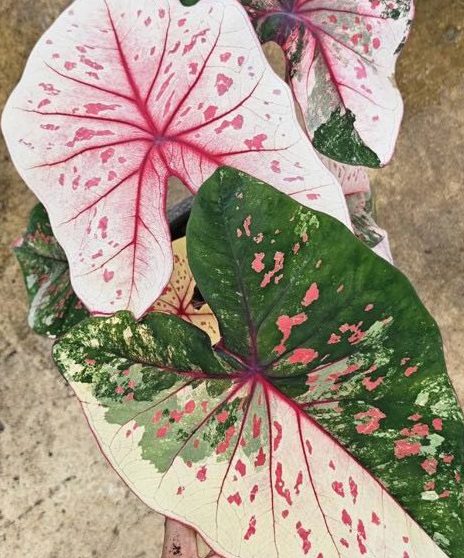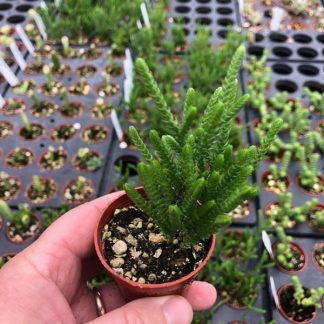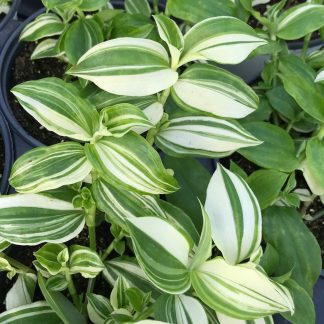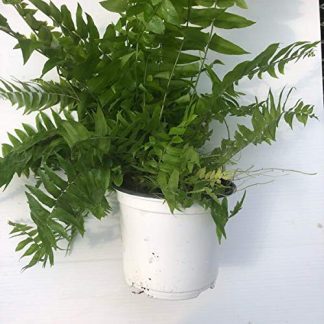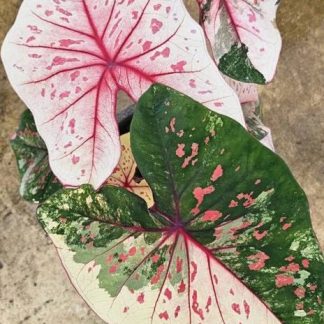Description
Caladium ‘Keaw Manee Kan’
The Caladium ‘Keaw Manee Kan’ is a striking and rare ornamental plant known for its bold and colorful foliage. This tropical beauty belongs to the Caladium genus, which is renowned for its heart-shaped leaves and vibrant patterns. Native to Central and South America, Caladiums are beloved for their ability to transform gardens, patios, and indoor spaces into lush, tropical sanctuaries.
The foliage of Caladium ‘Keaw Manee Kan’ is a true work of art. Its large, heart-shaped leaves display a stunning mix of green, white, and pink. The white centers of the leaves are accented by bright green margins and delicate pink veins, creating a mesmerizing blend of colors. This plant’s unique and vibrant appearance makes it a perfect choice for shaded garden beds, container gardening, or as an eye-catching indoor plant.
Caladium ‘Keaw Manee Kan’ thrives in partial to full shade, making it ideal for spaces with limited sunlight. Its adaptable and low-maintenance nature makes it a favorite for both novice and experienced gardeners. Whether used as a focal point in a garden, part of a mixed container arrangement, or to add a splash of color indoors, this caladium variety is sure to impress.
Key Features of Caladium ‘Keaw Manee Kan’
-
Vibrant Foliage
Heart-shaped leaves with white centers, bright green margins, and delicate pink veining create a stunning visual display. -
Shade-Loving
Thrives in partial to full shade, making it perfect for shaded gardens, patios, or indoor environments. -
Compact Growth Habit
Grows to a manageable size of 12–18 inches, ideal for small spaces or as part of a mixed arrangement. -
Seasonal Color
Provides vibrant foliage from late spring through fall, bringing continuous beauty to any space. -
Low Maintenance
Easy to care for with minimal requirements for watering and fertilizing. -
Tropical Appeal
Adds a lush, exotic touch to gardens, patios, and indoor décor.
How to Grow and Care for Caladium ‘Keaw Manee Kan’
1. Choosing the Right Location
Light Requirements:
Prefers partial to full shade. Avoid direct sunlight, as it can scorch its delicate leaves. Indoors, place near a bright window with filtered light or indirect sunlight.
Temperature and Climate:
Thrives in warm temperatures between 65–85°F (18–29°C). Sensitive to frost—plant outdoors only after the last frost date. In cooler climates, treat it as an annual or bring it indoors during fall and winter.
2. Soil and Planting
Soil Type:
Use well-draining, nutrient-rich soil. A mix of peat moss, compost, and perlite retains moisture without waterlogging.
Planting Instructions:
-
Outdoors: Choose shaded or partially shaded locations with rich soil. Plant tubers 2 inches deep with the pointed side up, spacing 8–12 inches apart.
-
Containers: Use pots with drainage holes and high-quality potting mix.
3. Watering
Consistent Moisture:
Keep soil evenly moist but not soggy. Water deeply and let excess water drain away. Avoid letting soil dry out completely, especially during hot weather.
Indoor Plants:
Water when the top inch of soil feels dry. Overwatering can lead to root rot.
Humidity Needs:
Thrives in high humidity. Mist regularly, use a pebble tray, or place in humid areas like bathrooms.
4. Fertilizing
Regular Feeding:
Fertilize every 4–6 weeks during the growing season with a balanced, water-soluble fertilizer (e.g., 10-10-10) for lush growth and vibrant foliage.
Organic Options:
Compost tea or slow-release organic fertilizer works well for steady nutrients.
Dormant Period:
Stop fertilizing in late fall as the plant enters dormancy.
5. Pruning and Maintenance
Removing Yellow Leaves:
Trim yellow or damaged leaves to maintain a tidy look and encourage new growth.
Preparing for Dormancy:
Allow foliage to die back naturally before digging up tubers for winter storage.
Winter Care:
Store tubers in a cool, dry place during winter and replant in spring.
6. Propagation
By Tubers:
Divide tubers during dormancy. Ensure each division has at least one growth point. Store divisions in a dry, dark place until spring planting.
7. Pests and Diseases
Pests:
Watch for aphids, spider mites, and mealybugs. Treat with neem oil, insecticidal soap, or rinse leaves with water.
Diseases:
Overwatering can lead to root rot and fungal problems. Ensure proper drainage and avoid overhead watering.
8. Winter Care
Indoor Protection:
In cold climates, bring potted plants indoors before the first frost. Place in a warm, humid location with bright, indirect light.
Storing Tubers:
For outdoor plants, dig up tubers after foliage dies back. Clean, dry, and store in a cool, dry place until spring.
Landscaping and Decorative Uses
-
Shaded Garden Borders: Perfect for lining paths or beds with bold, tropical color.
-
Container Gardening: Excellent for pots, planters, or hanging baskets on patios and balconies.
-
Mixed Plantings: Pair with ferns, hostas, or impatiens for a lush, layered look.
-
Indoor Décor: Brightens low-light rooms in decorative pots for a tropical vibe.
Common Problems and Solutions
-
Yellowing Leaves
Cause: Overwatering or nutrient deficiency.
Solution: Adjust watering and fertilize appropriately. -
Brown Leaf Edges
Cause: Low humidity or underwatering.
Solution: Increase humidity and maintain consistent watering. -
Stunted Growth
Cause: Poor soil or insufficient light.
Solution: Replant in nutrient-rich soil and provide brighter, indirect light.
The Caladium ‘Keaw Manee Kan’ is a stunning ornamental plant that combines vibrant color with ease of care. Its unique foliage—green, white, and pink—makes it a standout choice for shaded gardens, patios, and indoor décor. Whether you’re a seasoned gardener or just starting, this tropical beauty adds a bold, exotic touch to any space.
By following these care guidelines, you’ll enjoy the lush charm of Caladium ‘Keaw Manee Kan’ year after year. Add this exceptional plant to your collection and create a vibrant oasis in your home or garden.

